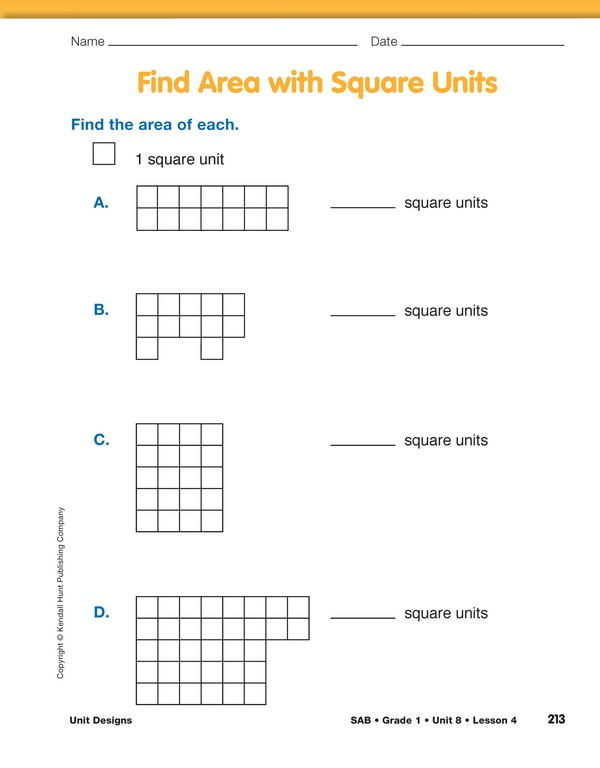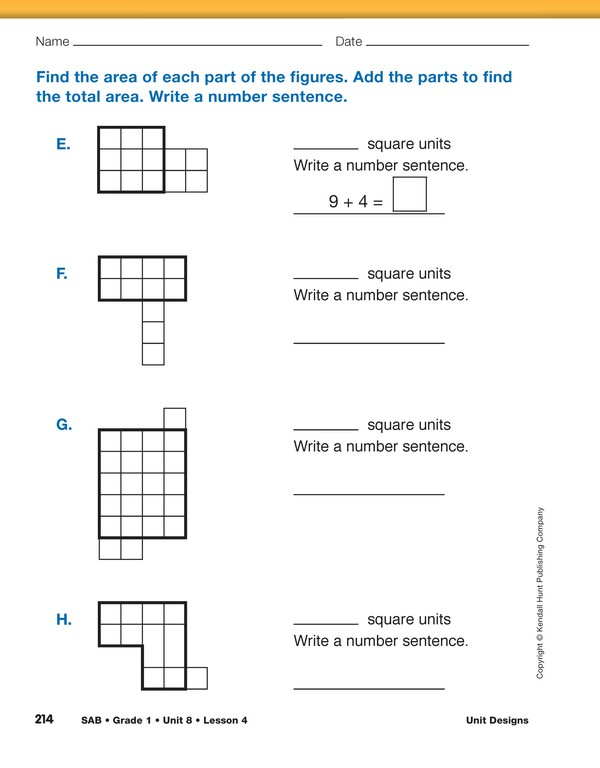Using the display of the Find Area with Square Units pages in the Student Activity Book, have students
review the counting strategies used in this lesson (skip counting, counting on). For each shape, ask a different student pair to show their counting strategies.
When students divide the shapes into parts, encourage students to show how they can write a
number sentence for the sum of the parts. Ask them to match the numbers in their sentence to the parts of
the shape. For example, in Shape B, ask students to show the parts of the shape and ask them to write a number sentence to match the partitions.
- Think back to other lessons we did in this unit. Can two different shapes have the same area?
How do you know? (Possible responses: Yes, Ruthie and Rupert Rectangle were different shapes but had the same area. We traced different
shaped clouds with the same number of pennies so the areas were the same.)
- When we measured the area, what were we measuring? How tall the shape was? How wide the shape was? Or, how much space was inside the
shape? (how much space the shape covers)
- If I show you a shape and tell you it has an area of ten, do you know the size of the figure? Why or
why not? (Possible response: We don’t know the size because we don’t know if you are using
square inches or a different square unit. We don’t know the size of the square.)
Provide time for students to complete the Which Two Are the Same page in the Student Activity Book.
Use the Which Two Are the Same page to assess students’ abilities to represent partitions of quantities using
number sentences and area models [E3]; measure the area of a shape by counting square units [E6]; and recognize that
different shapes can have the same area [E4].
As a group or center activity, give students square-inch tiles and ask them to make two different shapes that have the
same area of 8 square inches. This activity can provide targeted practice in recognizing that different shapes can
have the same area. Students can draw their shapes on paper and label them with the area. Remind students to use square inches when they report the areas.
Students with visual, spatial, or small motor difficulties may benefit from having their pages enlarged. Students who have
difficulty skip counting on the grid should be allowed to count their square units by ones, coloring or marking each unit as it is counted.

















